The Difference Between Whiskey Sour And Whiskey Smash Cocktails
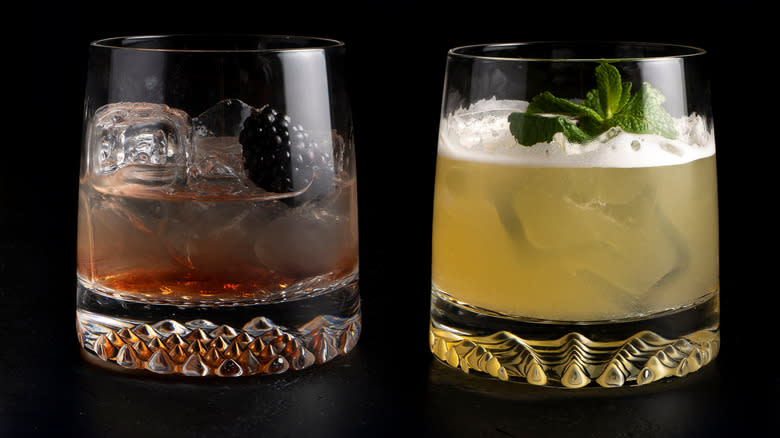
Whiskey cocktails have endured as timeless classics because they masterfully blend the earthy warmth of whiskey with versatile companions like citrus and herbs. If whiskey is your spirit of choice, you might find yourself confronted with the dilemma of choosing between two historically popular drinks: the whiskey sour and the whiskey smash. Although the drinks have very similar ingredients and proportions, slight alterations result in two very different drinks in the glass.
What the drinks have in common is a careful balance of acidity from lemon, sweetness from simple syrup, and, of course, the heat and texture from whiskey. It's amazing how the character of these simple ingredients changes with just a slight divergence. The main difference comes from how the lemon is added: only juice is used for the whiskey sour, and, as the name suggests, the lemon is muddled for the whiskey smash, along with a sprig of fresh mint.
Read more: The 25 Best Bourbon Brands, Ranked
What Is A Whiskey Sour?
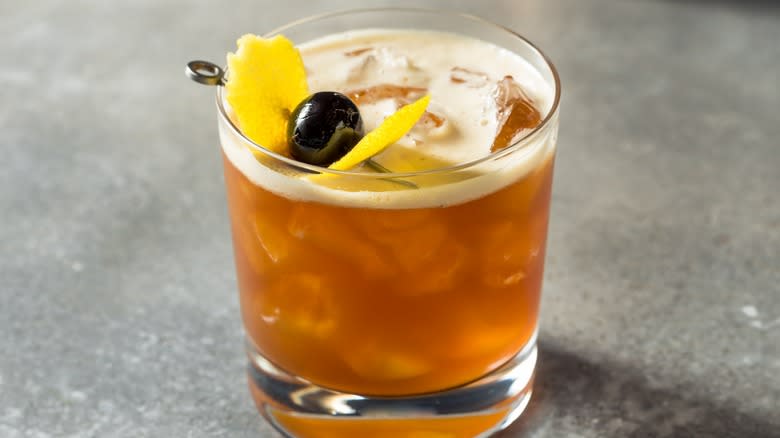
The group of cocktails known generally as sours may be among the oldest cocktails, having their roots in the seafaring days when citrus juice mixed with rum and sugar was used as a tonic against disease. The earliest printed recipes appeared in the mid-1850s and the drink has persisted nearly unchanged since then. Although the ingredients are not complicated, getting the right balance of acid and sugar with each style of whiskey used requires some skill.
An important component of the whiskey sour recipe comes from the act of shaking the ingredients. Melted ice contributes water that dilutes the drink slightly, opening up the flavors. That signature shaking also aerates and chills the drink. Some mixologists go a step further and add egg white for an extra foamy surface after shaking which helps temper any harshness from either the whiskey or lemon juice. Changing up the simple syrup for maple syrup, honey, or brown sugar and the lemon juice for other citrus fruits results in a huge number of delicious variations.
What Is A Whiskey Smash?
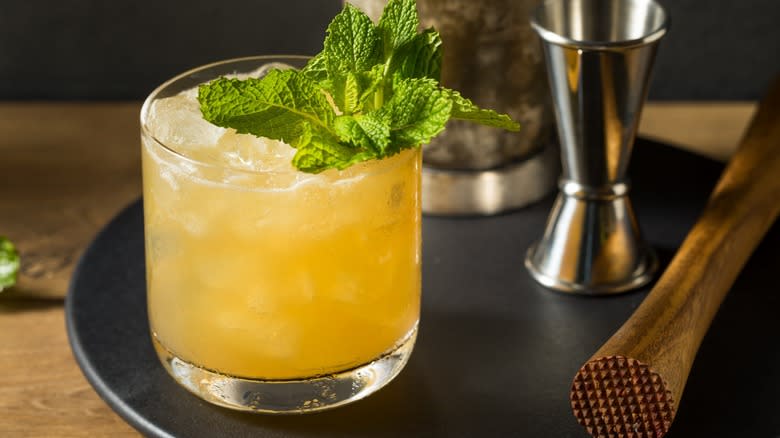
The smash is another venerable drink category, reportedly also quite popular in the mid-1800s. Muddling the citrus fruit used for the drink is a key component of the whiskey smash, which results in getting all of the essential citrus oil flavors along with the juices into the mix for a richer-tasting drink. Mint is also a major flavor component in a whiskey smash, muddled lightly with the other ingredients, and added as a garnish as well.
The smash ingredients are shaken over ice and strained, resulting in a drink that is more rustic and has a bolder flavor than its sophisticated sour cousin. Mixologists have branched out to other fruits and herbs to innovate new flavor combinations in this drink category, though some kind of citrus is still included to balance sweetness along with fruits that marry well with whiskey like peach, cherry, seasonal berries, and apple. Thyme and basil might stand in for the mint in this case, and a dash of bitters is sometimes added for balance.
The Main Difference Is In The Muddling
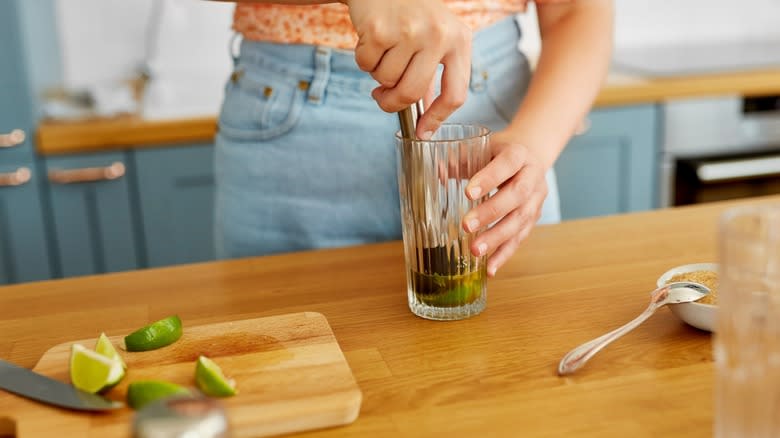
It's fitting that the muddled version of this whiskey cocktail pair is called a smash since the smashing of the fruits and herbs makes such a huge difference in the flavor and texture of the drink. The mechanical action of breaking up the rind of the lemon with a cocktail muddler releases flavorful citrus oil, a little bitterness from the pith, and, of course, the acidic juices.
The pulp of any of the popular fruit varieties used in smash variations also becomes integrated into the drink during the muddling process, becoming part of the mouthfeel while the drink is sipped. You'll find variations in both sour and smash drink categories, but once muddled fruit is introduced, a cocktail shifts from being a straight sour to a smash.
You might wonder about drinks with other combinations of muddled ingredients, such as the mint julep, caipirinha, and mojito. The julep stands alone in that set because it has no fruit, so technically it's not a smash, while the others are examples of smashes with alternate spirits!
Whiskey Smashes Feature Aromatic Herbs And Bitters
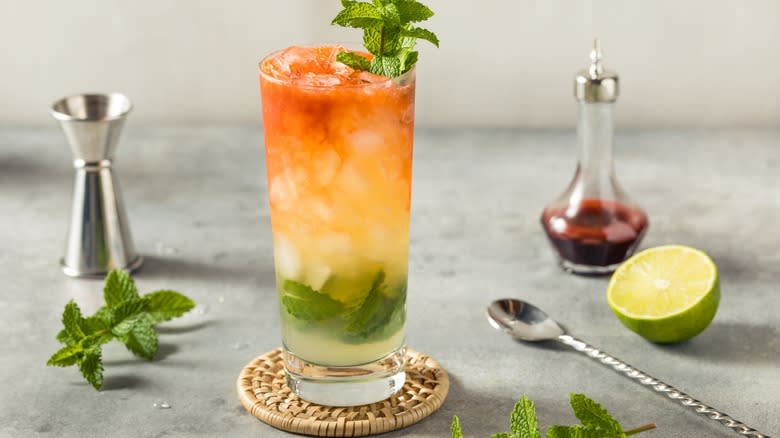
All five smashes listed in the historic 1888 "New and Improved Bartender's Manual" by Harry Johnson include mint along with seasonal fruit, so it's fair to say that herbs are a defining feature of the smash. The herb is lightly bruised when the cocktail is shaken to release essential oils into the drink, and a further sprig garnishes the finished beverage to impart even more aroma.
Knowing that the smash has an intense mint flavor might guide your choice of whiskey to a sweeter bourbon profile, saving the spicier high-rye whiskies for the sours. Of course, many great smashes feature other herbs like basil and thyme, all designed to harmonize with a variety of fruits and whiskies. Cocktail bitters are another aromatic ingredient added to some smash recipes to further increase the complexity of the drink.
The bitterness acts as a counterbalance, enhancing the overall balance of sweet, sour, and herbal elements in the cocktail. Whether opting for classic aromatic bitters or experimenting with exotic flavors like orange or cherry, each drop introduces a subtle, lingering depth to the whiskey smash. Although neither whiskey sours nor smashes originally included bitters, it's not uncommon to see a few dashes in either drink these days because they so neatly tie flavors together.
Read the original article on Tasting Table.

